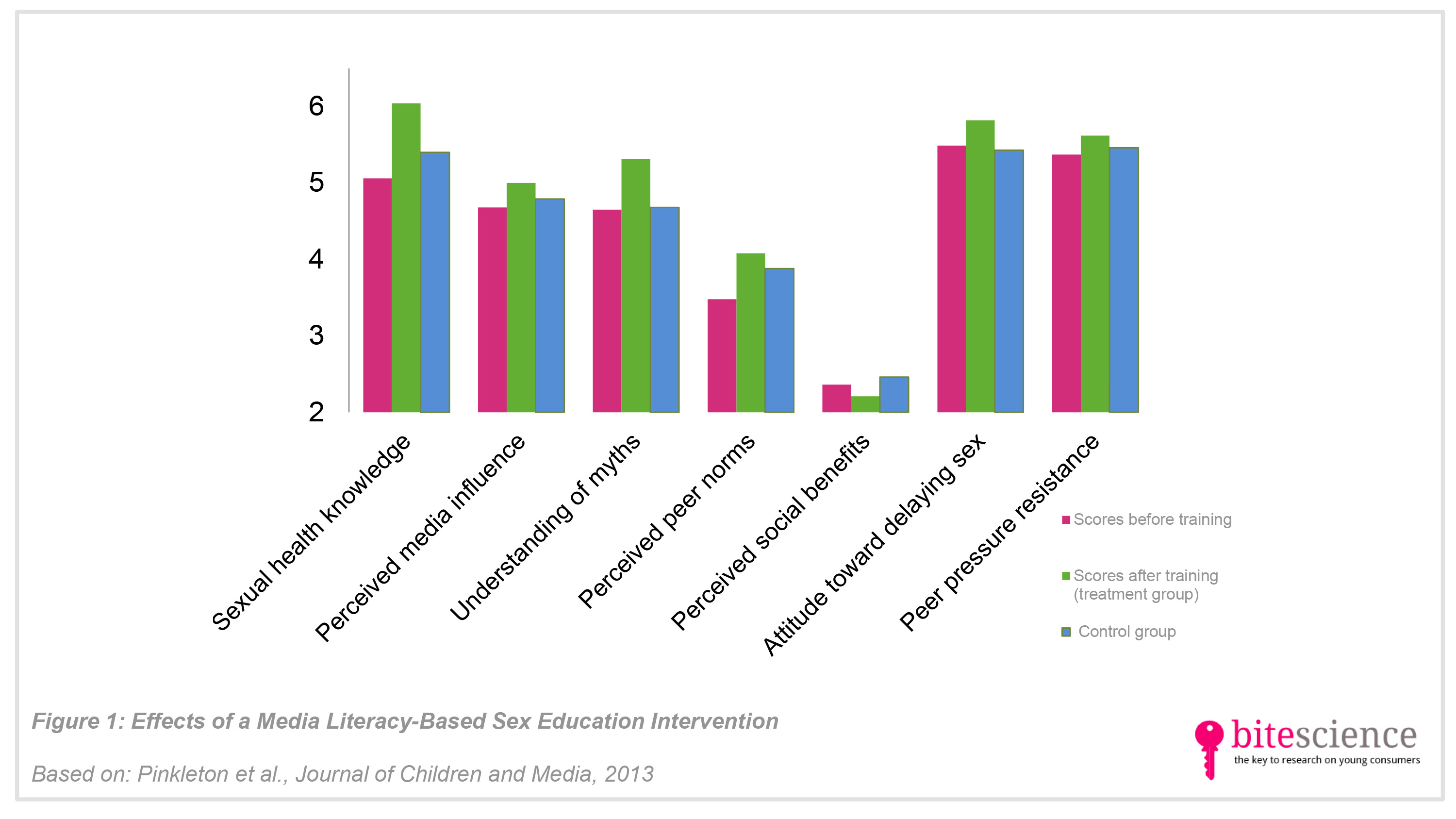
The Importance of Media Literacy Training For Teens’ Sex Education
Critics state that the media have an enormous impact on teens’ sexual decision making. A Journal of Children and Media study therefore developed and tested a media literacy-based sex education program that may overcome this potential risk. The school-based program combines peer-led lessons about the consequences of sexual activity with lessons about the influence of the media and the way advertisers use sex to sell products. It turns out that the program was successful in positively stimulating teens’ responses to and interpretations of sexual media messages.
Take aways
- Participating in the media literacy-based sex education program ‘Take It Seriously: Abstinence and Media’ (peer-led training), improves teens’ understanding of how advertisers use sex to sell products, how the media influence their decision making about sex, and how the media often portray sex as fictitious and glamorous.
- When combined with lessons about teen pregnancies, and sexually transmitted infections, teens’ sexual knowledge improves as well, just as their attitude toward delaying sex.
- For educators, it’s worth looking at ways to integrate peer-led media literacy trainings in their sex education program.
Study information
The question?
Do media literacy-based sex education programs influence teens’ responses to and interpretations of sexual media messages?
Who?
1,098 11- to 19-year olds (mean age: 14 years old; 47% boys; 79% Caucasian, 13% Asian, 8% Latino; 5% African American, 5% Native Americans/Alaskan Natives, and 3% had other racial backgrounds)
Where?
Washington, United States
How?
All teens filled out a questionnaire that revealed their sexual knowledge, sexual norms, sexual expectations, and their understanding of the effects media has on their sexual behavior. Then, the researchers divided the teens into two groups. One group followed the media literacy-based sex education training “Take It Seriously: Abstinence and Media”, and one group did not. The training contained five peer-led lessons lasting approximately 45 minutes each, and focused on the way advertisers use sex to sell products, the myths and truth behind teen pregnancy, sexually transmitted infections, and on teens’ considerations to delay sex. The lessons were given over five consecutive days. Afterwards the teens were asked to fill out the same questionnaire again, in order to test whether the media literacy-based training was effective.
Facts and findings
- The media literacy-based sex education intervention had several positive effects on teens’ sexual knowledge, and their responses to sexual media messages. Teens who followed the training:
- gained more knowledge about the consequences of sexual activity (e.g., pregnancies, sexually transmitted infections);
- were more convinced about the influence of the media on their sexual decision making (e.g., that sexual behaviors shown on TV affect their behavior);
- had stronger beliefs that most sexual portrayals in the media are fictitious (e.g., that characters on TV make it seem like sexually transmitted infections rarely happen);
- were more convinced that peers prefer to wait before having sex;
- saw less social benefits of engaging in sexual behavior (e.g., that being sexually active makes a person cool or popular);
- were more positive about delaying their sexual activity;
- and were more resistant for peer pressure (e.g., they choose to resist pressure to engage in sexual behavior) than teens who did not follow the training (See Figure 1).
- Remarkable fact: Girls more often had positive feelings towards delaying their sexual activity than boys, and boys more often saw social benefits of engaging in sexual behavior than girls.
